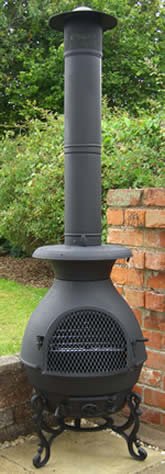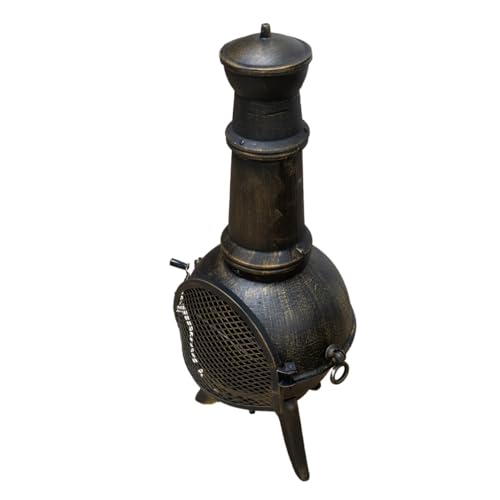지역센타회원 | Why Propane Chiminea Is Fast Increasing To Be The Hottest Trend Of 202…
아이디
패스워드
회사명
담당자번호
업태
종류
주소
전화번호
휴대폰
FAX
홈페이지 주소
 A Propane Chiminea Will Keep Your Patio Cozy For Hours
A Propane Chiminea Will Keep Your Patio Cozy For HoursKeep your patio warm through outdoor lunches, cocktail hours and starlit dinners with this propane chiminea. Select the model that is the most suitable for your needs and space, prioritising the safety and maintenance requirements.
Chimineas, or pronounced cheemi-NEH or yah, are a stand-alone fireplace with an upright chimney and an elongated body. They are a fantastic addition to outdoor living spaces. Like other wood-burning patio heaters they provide a warm environment that's easy to regulate.
Safety
A chiminea, also known as an outdoor fireplace, is designed to burn a fire for a long period of time. It is made from clay or steel, and looks like a vase. The chimney directs the smoke. It is a fantastic choice for a garden in which you have to heat it up and cook. Some models have an oven at the top, which can be used to cook food over the flame. Chimineas should be set on a fire-proof surface such as brick, concrete, or stone patios. It should also be kept at least 30 feet from buildings and other structures that can be combustible.
Chimineas are safer than fire pits, because the flames and smoke are contained within the structure. This means they are less susceptible to accidents and injuries. The size of a fire is more easily controlled in a chiminea, since air is dragged into the bowl from the front and directed upwards. This natural draft keeps the fire burning without any effort on your part.
A chiminea can be used to create an atmosphere in your outdoor living space, as it produces radiant heat that creates an authentic campfire vibe. It also creates a warm atmosphere for friends and family to relax in the evening. You can also add logs to the flames to give it an atmospheric crackle and pop.
However it is more complicated to install and maintain than a fire pit. In contrast to a fire pit, you must put sand in the bottom of the chiminea before making the fire chiminea. This is necessary to protect the clay from cracking as it heats up. You must also place it on a safe surface and keep it at a distance of 10 to 20 feet from trees, walls or fences as well as other structures that are combustible.
Both fire pits and chimineas [Wuyuebanzou.com] can be used to generate heat for your home, but it's crucial to choose the right one for your requirements. Make an informed choice by considering the aesthetics, maintenance and fuel efficiency of every model. Also evaluate your lifestyle and determine whether you'll be using the heater to entertain frequently or just relaxing family nights at home.
Fuel
A propane chiminea can be used for both heating and cooking. The most commonly used chimineas are made of clay, however other materials include cast iron and steel. Some models combine both types of materials providing the traditional appearance of a chiminea as well as the gas-powered heat.
The fuel you use in your chiminea can affect how long the fire's lifespan as well as the degree of heat it attains and other factors. You'll have to take into consideration the short and long-term fuel costs along with the installation and maintenance costs.
Propane has many advantages over wood or ethanol. It's odorless and can provide a lot of heat at a low cost. It is a widely used substance that is used in heaters and cookware, so you shouldn't have a problem finding it. And you won't have to be occupied with the flame of a propane stove, as it usually starts by flipping the switch.
There are some drawbacks to using a chiminea powered by propane. First of all, it is not as green a choice as wood or ethanol. It's a fossil-fuel, the result of natural gas processing and petroleum refining. As a result, it's not a good choice for the environment. Additionally, it can also cost more than ethanol or wood.
You should also take into consideration the smoke that is produced by your chiminea, as well as any local regulations that might apply to outdoor burning. Kiln-dried heat logs, also known as firewood are ideal for chimineas as they emit very little smoke. They also make a secure choice for chimineas that are located in Smoke Control Areas.
The final decision comes down to your style preferences and lifestyle requirements. Both are a stunning focal point for outdoor space, but you may need to prioritize security features and maintenance requirements when choosing. In addition, you'll need to assess how often you plan on using your outdoor fire pit or chiminea, so you can choose the most suitable fuel type for your needs. You can make a wise decision and enjoy the warmth of your new chiminea for years to come.
Ventilation
If you're a lover of outdoor fires, a chiminea could be the perfect choice. They are a great source of heat and style and they also feature natural drafts that keep the fire burning without much taking care of it. You'll have more time to spend with your family and friends instead of worrying about the fire.
Chimineas have a bowl made of a pile of sticks which creates a natural draft. The air is pushed through the front of the bowl, travels upwards through the stack and ends at the top. This design helps to reduce the amount of smoke and ash that is produced, making it safer for you to sit nearer to the flame. Although a chiminea is able to be used indoors, it is recommended to keep it a good distance away from anything that could ignite because sparks are constantly flying all over.
If your chiminea produces a lot of smoke, there are many ways to cut down on the amount. Utilize Duraflame logs for ceramic chimineas that don't produce a lot smoke. You can also put your terracotta chiminea away from the wind. These two suggestions will let you enjoy your chiminea with no concerns about causing trouble to your neighbors or damaging your patio furniture.
Clay chimineas are just as durable as steel or cast iron models, but they must be protected from the elements. The best way to achieve this is to apply a sealer or acrylic coating to the exterior of your chiminea prior begin using it. This will stop it from cracking and fading because of sunlight exposure. Reapply the coating every 6-8 weeks of usage.
If you are ready to light a fire, you can place your chiminea large on the stand that came with it. Never place the chiminea on a flammable area such as a deck. Also, clear out any combustible or debris around it before lighting a fire.
If you are a frequent starter of fire it is essential to season your Chiminea before you begin using it frequently. The initial small fires you build should be a mixture of only a few pieces of dry, seasoned hardwood and the kindling. These initial, small controlled burns can aid in sealing the clay and minimize hairline cracks that could cause problems.
Maintenance
It is important to keep your chiminea in good condition as you would any other outdoor furniture. If you take care to clean it on a regular basis and making sure that it's protected from the elements (a waterproof cover is vital) then it will last longer and work at its top performance.
Chimineas can crack if they are not properly maintained. Alongside the obvious avoid dropping it or beat it with a hammer - poor methods of burning and not paying attention to maintenance can result in cracks in the clay Chiminea.
This is why a thorough chiminea care guide is essential. This guide should be provided with your chiminea. It should provide information on how often you should clean it and what special techniques you can use to keep the clay in good condition. Most people use the bicarbonate soda paste method of cleaning described above. They do this about three times per year, or more often in the summer when they are using it the most. After cleaning your chiminea, it's worth giving it a quick rinse with clean water. Then, return the gravel or sand back to the base's bottom.
If you're concerned about cracks, it could be worth looking into a cast-iron chiminea. It's much more durable than clay versions. Even cast iron chimineas are susceptible to rusting, so it's important to keep them dry and away from combustibles.
As well as cleaning your chiminea, it's also a good idea to purchase a protective grill for it, as well as a weatherproof, sturdy cover like this one on Amazon which will stop any harm while you're not making use of it. A grate is especially beneficial if your Chiminea is located in an open-plan living space with soft furnishings close to it. It will stop hot ash from flying all over the place.
A chiminea will reduce the amount of smoke produced in your outdoor area. It has a sealed chimney that funnels smoke upwards and away from those who are smoking or consuming a fire. To lessen the amount of smoke produced, it is best to only use firewood that is seasoned.





